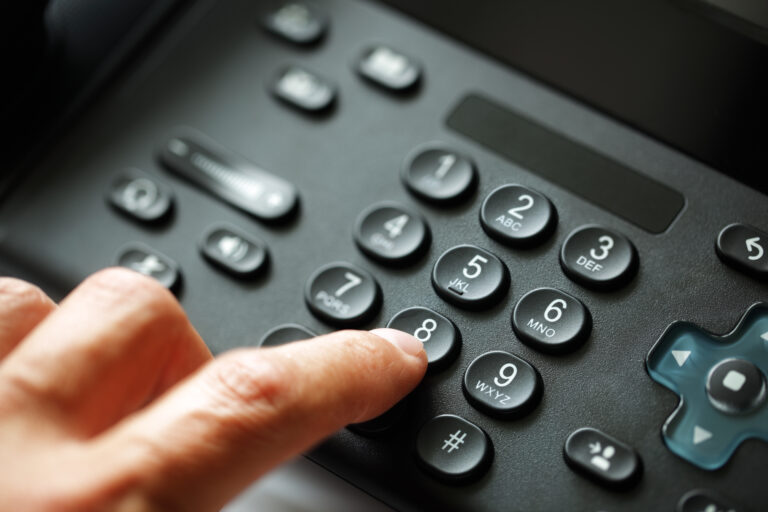No matter what time of year, it’s never too early to start thinking about your taxes. While you can file taxes by mail, it can be slow and inconvenient. And although there are plenty of electronic filing options in 2023, you might be looking for a more secure alternative.
That’s where faxing comes in. You can’t fax your entire tax return to the IRS, but there are some tax forms that you can still send — safely, reliably, and quickly — through fax. Sending the right tax documents to the IRS via fax helps to streamline and safeguard the process.
Let’s explore how faxing to the IRS works, including how to send your own tax forms through online faxing.
Can You Fax Documents to the IRS?
Unfortunately, there are only two ways to file your annual income tax return: Through electronic filing or old-fashioned mail. As of right now, the IRS doesn’t allow individual taxpayers to send most tax forms via fax.
However, there are a few fax forms that can be sent directly to the IRS — if they’re the right types of documents. Here are a few that you may be able to send by fax:
- Form 8918
- Form 8806
- Form 8023
- Form 8886
- Form 2553
- Form 4868
- Form 8962
- Form SS-4
If an IRS agent reaches out to you to ask for missing fax papers, you can also send them through online fax. The same goes for taxpayers under audit.
Even if you aren’t faxing anything directly to the IRS, faxing can still play a powerful role in the filing process. If you’re working with an accountant, fax offers a secure and reliable way to send them your tax documents and more.
Unlike email, faxing keeps your most sensitive information safe from hackers. It also provides instant delivery confirmation and receipts for your financial records.
How To Fax Documents to the IRS
While you can’t send your full tax return directly to the IRS, you can still send some documents via fax to streamline the process. But in order to do that successfully, you first need to know the rules, regulations, and best practices for faxing the IRS.
Here’s how to get documents into the hands of the IRS by fax.
1. Prepare Your Documents
Just like when you’re sending documents by mail or uploading them to an online e-filing service, you need to first make sure that your documents are all in order.
First, make sure that your tax form is one of the tax forms eligible for faxing based on IRS guidelines, like Form SS-4 or Form 4868. If you have explicit permission from the IRS, like if an agent has contacted you about missing forms, then disregard this step.
Then, ensure that the form is properly filled out and that nothing has been left blank. If you filled it out by hand, double-check for legibility and clarity.
2. Know the IRS Fax Number
For the next step, you’ll need to know the correct IRS fax number. There isn’t just one fax number for the IRS. Each type of form and regional area has its own unique fax number. If you try to send documents to the IRS’s principal office, they won’t accept your paperwork.
So how do you know the right IRS fax number to send documents? For most fax-eligible forms, you can find the IRS fax number online.
To file one of the most common types of faxable forms, the SS-4, taxpayers living at a legal address (or using a legal business address) in the United States can use 855-641-6935. For taxpayers without a legal residence or business address in the U.S., it gets more complicated. Those currently located in the U.S. can use: 855-215-1627. Those located outside of the U.S. can use: 304-707-9471
To file forms 8821 or 2848, these are the fax numbers to know:
- 855-214-7519 (eastern U.S.)
- 855-214-7522 (western U.S., including Hawaii and Alaska)
- 855-772-3156 (U.S. territories)
- 304-707-9785 (outside of the U.S.)
3. Format Your Fax
When faxing the IRS, even something as simple as a formatting error can lead to problems with your filing. That’s why it’s so important to format properly. In addition to your digital file (or physical form), you should include a fax cover sheet.
Although fax cover sheets aren’t necessarily required, it helps to include one so that the recipient knows who the sender is, as well as the paperwork you’re submitting and why. A cover sheet can include:
- From — Your name, phone number, and fax number
- To — The IRS office (or employee) you’re sending the fax to
- Date — The date you’re sending the message
- Pages — The number of pages included in the fax
- Subject/Message — A brief note or message to explain the material
4. Send Your Fax to the IRS
Now, it’s time to finally send your fax to the IRS. The good news is that faxing the IRS is just like faxing anyone else — you can either use a fax machine or an online fax service.
To send physical faxes, you’ll need both a fax machine (or a printer with faxing capabilities) and a landline connection. For online faxes, you can send a fax from your phone, computer, or other device — from anywhere with a WiFi connection.
Online faxing makes it easy to fax tax documents with just the click of a button. Simply log into your portal, upload your documents in PDF file format, select the country’s area code, and enter the IRS fax number you want to reach.
5. Confirm Receipt and Follow Up
After you hit send, make sure that the fax tax forms went through. With a physical fax machine, you might get a printed confirmation page. With online faxing, you’ll get an automatic fax confirmation when your fax has been delivered.
It may take several weeks before your paperwork is acknowledged as received. If you haven’t heard back, you can always follow up with the appropriate IRS office. Make sure you keep a copy of your fax confirmation for proof of successful delivery.
Leverage the Most Secure Online Fax Service
Even with all of the e-filing options out there, fax remains the most efficient, accurate, and secure for document transmission. And when it comes to your taxes, you can’t afford to take risks.
Just because you can’t submit all of your tax forms by fax, there are still plenty of ways to leverage fax in your filing process. Whether you’re sending approved documents to the IRS or are faxing paperwork to your accountant, online faxing takes all the benefits of the fax machine to your mobile device or any device of your choice. When you sign up with MetroFax, you can enjoy secure, encrypted delivery of your tax documents — all from an online portal. Learn more about our faxing plans or try it out for yourself this tax season.


